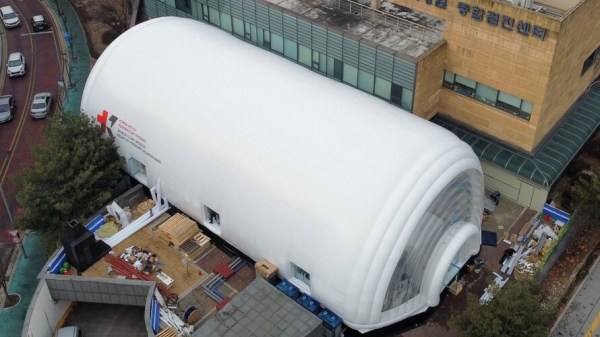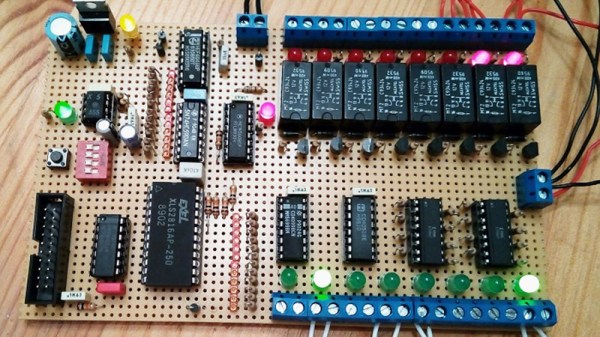The continued spread of Covid-19 has resulted in a worldwide shortage of hospital beds. A temporary hospital isolation ward (translated) was co-developed by the Korea Advanced Institute of Science and Technology (KAIST) and the Korea Institute of Radiological and Medical Sciences (KIRAMS) to help alleviate this problem. We’re not familiar with the logistics and expense of installing traditional temporary hospital facilities, but the figures provided for this inflatable building approach to the problem seem impressive. It takes 14 days to produce one module, a process which presumably could be pipelined. Being 70% lighter and smaller than their rigidly-constructed counterparts, they can be more easily stored and shipped where needed, even by air.
Once on-site, it takes one day to inflate and outfit it with utilities such as electricity, water, and communications. One of these modules, which look like really big inflatable Quonset huts, contains an intensive care unit, four negative-pressure rooms, a nursing station, staff area, changing and bathrooms, and storage. All this in a 450 m2 building 30 m long and 15 m wide. That works out to be almost 2-stories tall, which is confirmed by the photo above.

Now that the design is finished and a functional unit constructed, the goal is to put it into production as soon as possible. Of course, physical hospital facilities are not the only thing in short supply these days — doctors, nursing and support staff, medical supplies, not to mention the vaccinations themselves, are all needed. But hopefully the success of this project can contribute to the global effort of saving lives and getting control of the virus sooner rather than later. The video below is in Korean, but the automatic English subtitles aren’t too bad.













